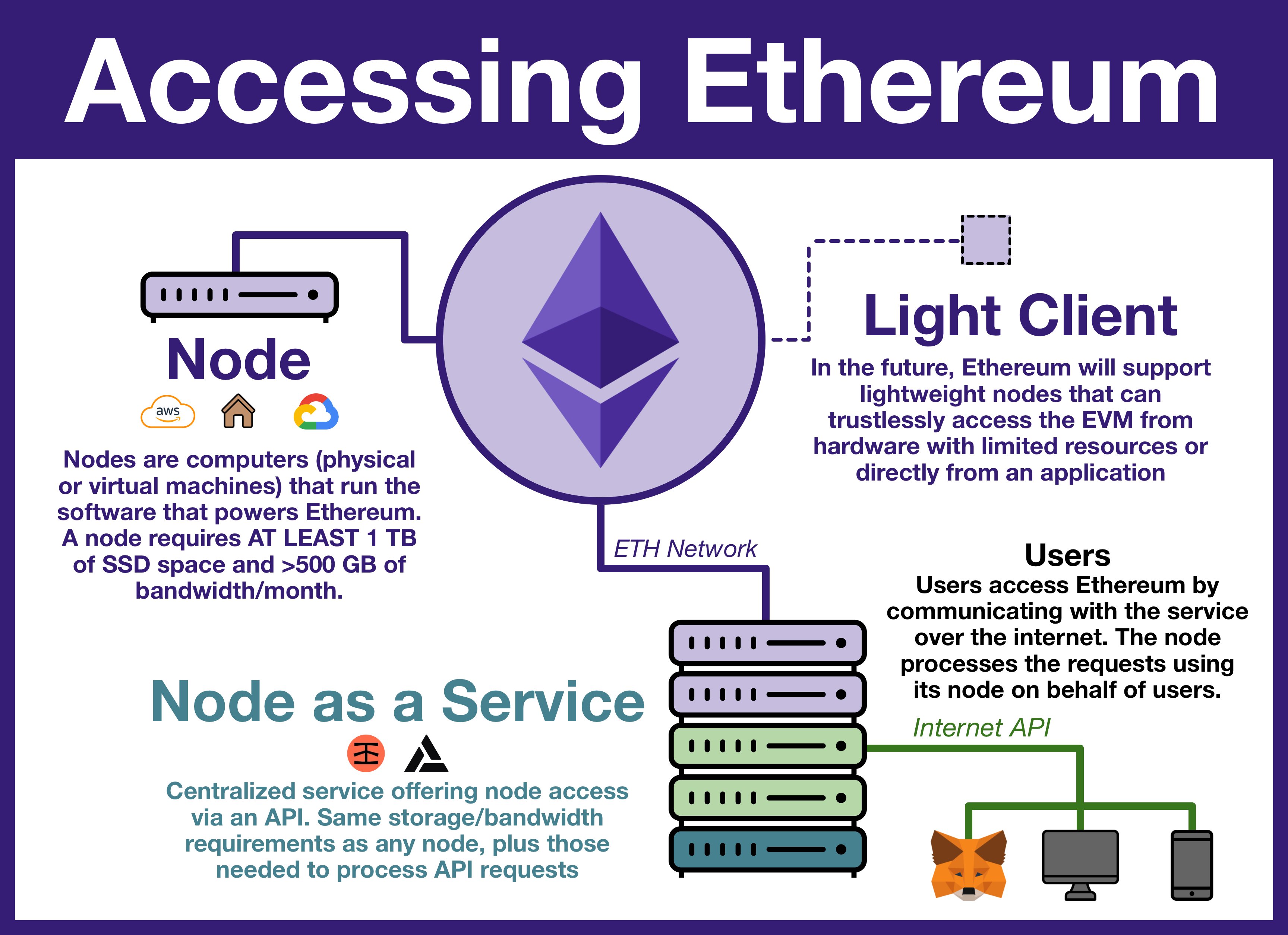
This article will walk you through the resource requirements of an Ethereum node in November 2022.
All the screenshots you see are real data pulls from the node I operate, so keep that in mind (for better or worse).
¶ Accessing Ethereum
¶ The World Computer
Ethereum exists between a network of 1,000s of computers (nodes), each running a local version of the Ethereum Virtual Machine (EVM). All copies of the EVM are kept perfectly in sync.
Any individual EVM is a window into the shared state of the World Computer.
This distributed network of EVMs is held in sync via a consensus mechanism. A consensus mechanism is a system by which a leader (block proposer) updates the state of their EVM and the rest of the network trustlessly follows.
¶ Ethereum Nodes
You can think of a node in two ways: a real-world computer or the group of software needed to access, validate and otherwise run the World Computer. Under the hood, a node is actually two independent pieces of software: a consensus client and an execution client.
Think like this:
Consensus client: responsible for Proof of Stake (PoS), securing Ethereum with the value of $ETH
Execution client: responsible for operating the computing platform of the World Computer (the EVM).
These clients are HEAVY DUTY pieces of software.
¶ Execution Client

First, let's look at the execution client (pictured here: GETH).
This is hard to digest, but the details aren't super important. The summary is ~425 GB to hold the EVM state and ~400 GB for historical data (although we can reduce this).
¶ Historical Data
If you were to start a new node from scratch, your node would not have ~400 GBs of historical data; yours would be (effectively) 0 GBs.
Once online, your node begins communicating with the network and updating the EVM. The old data is moved into a historical database. (Most) historical databases grows by ~15GB/week; this will quickly grow out of control and overwhelm any non-data center node.
Fortunately, (most) execution clients can "prune" this database, discarding all historical records before the most recent snapshot.
¶ Consensus Client

Now let's take a look at the consensus client (pictured here: Lighthouse).
Here things are a little simpler; you can see that (my specific instance of Lighthouse at this specific moment) is taking up 172 GB.
There is a lot more we can do to bring this number down. For starters, Lighthouse's database can be stored in as little as 15 GB (at the cost of performance).
Or you can switch to Nimbus which has been designed from first principles to be as lightweight as possible.
¶ Overall Node Size
Bottom line is there are a lot of configurations you can alter to change the storage size of your node, but no matter what it's going to be BIG (>500 GBs). Here's what the Rocket Pool docs say:
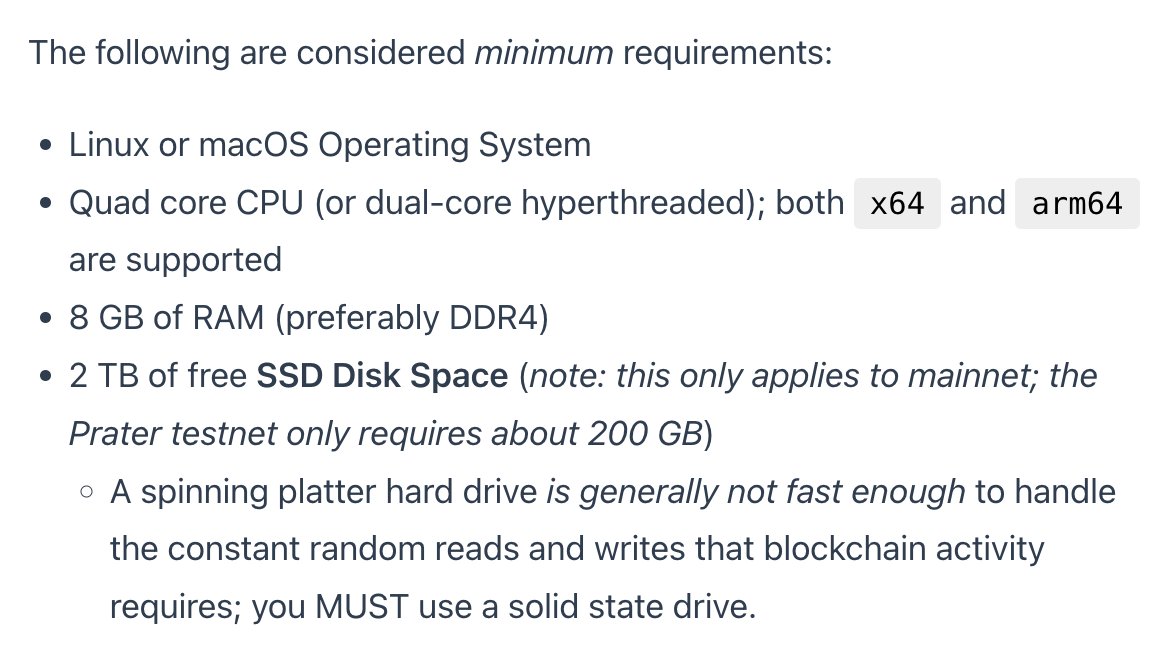
¶ Processing Requirements
You will also notice the CPU requirements.
If "Quad core CPU (or dual-core hyperthreaded)" doesn't mean anything to you, you can just think "high end CPU made in the last 2-3 years."
Point is, a node requires a serious CPU.
¶ Bandwidth Requirements
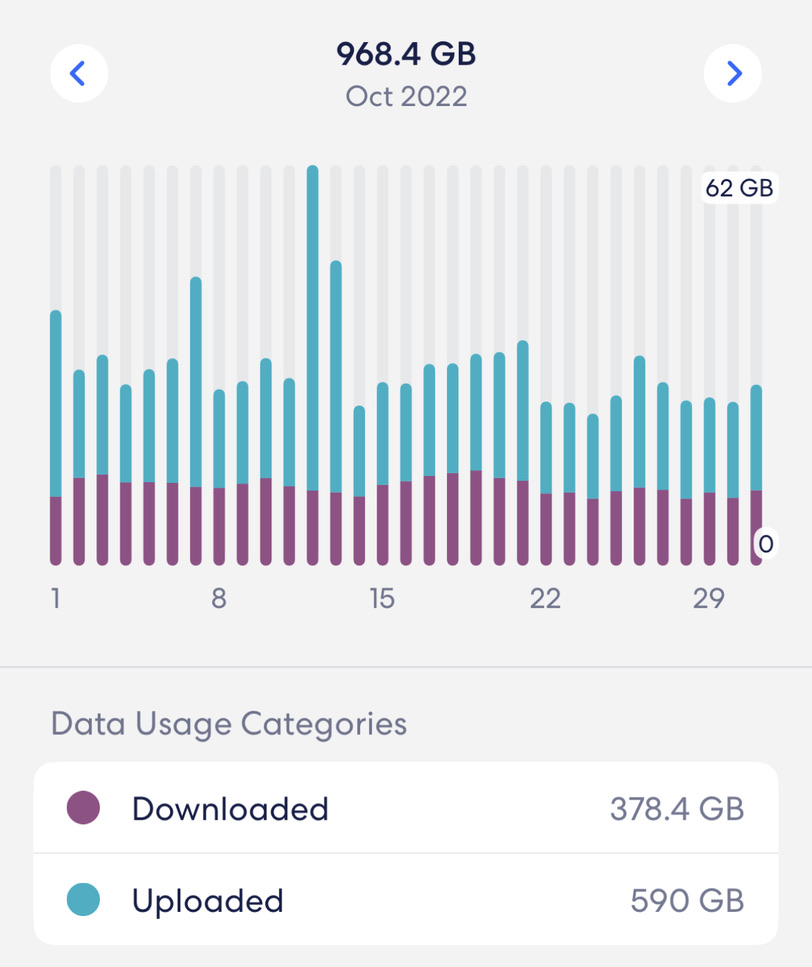 |
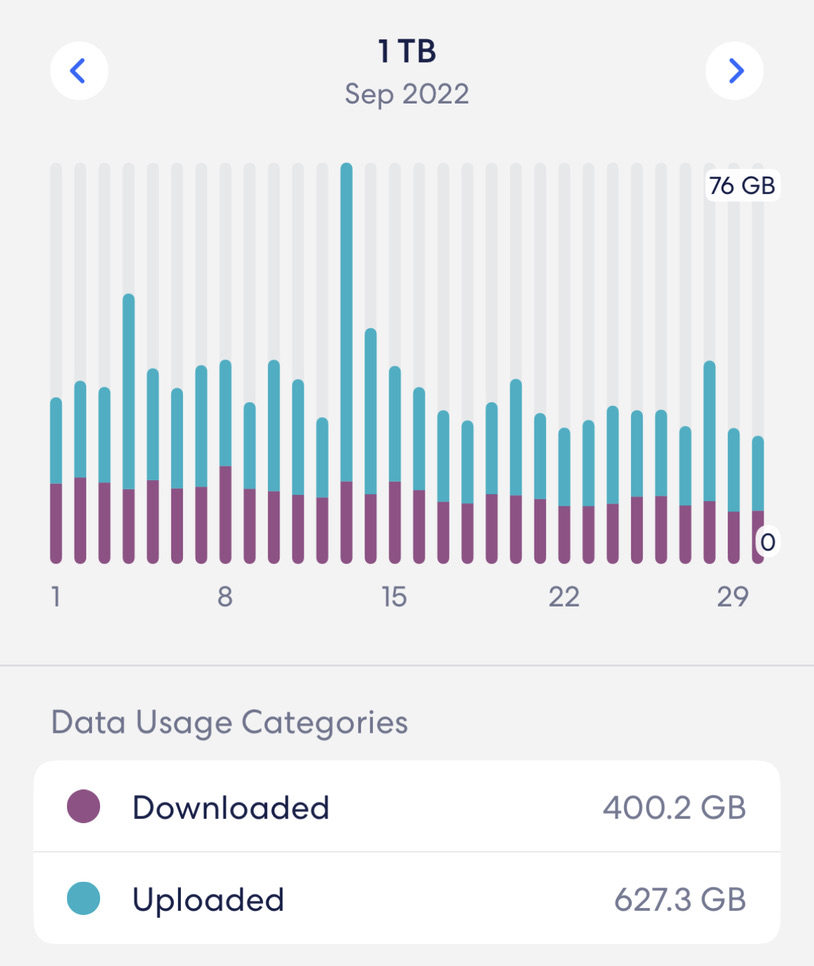 |
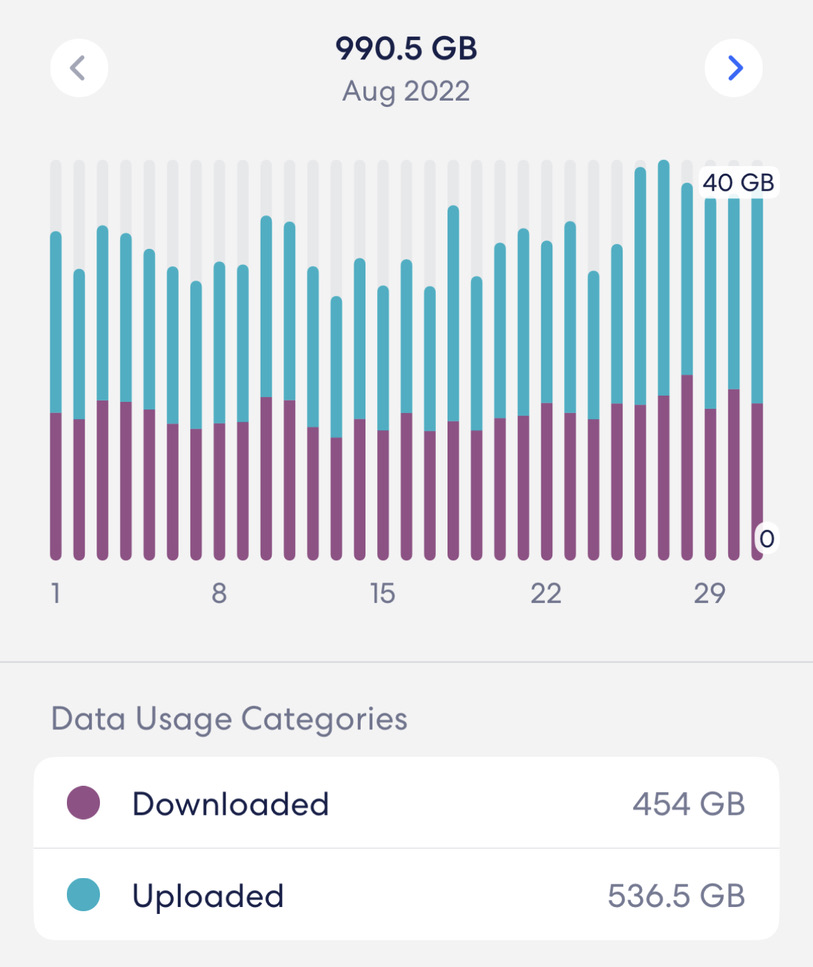 |
The hardware is not the only IRL resource required to run a node. You also need bandwidth.
Lots and lots of bandwidth.
Right now, you're looking at something on the order of ~1 TB worth of bandwidth every month.
That's ~13 GB download and ~20 GB upload every single day.
¶ Maintenance
We also need to consider the maintenance required to run a node.
First and foremost, if a node is supporting one or more validators it MUST stay online 24/7; offline time is penalized by confiscating it's staked ETH.
But even if the node is not staking $ETH (merely acting as an access point into Ethereum, not a validator), maintenance is still critical.
If the node falls out of sync, it has to spend a significant amount of time catching back up (and a sync from scratch? 2+ days)
¶ Node-as-a-Service
Taken all together, running a node is a big deal. Don't get me wrong, it's totally doable and I highly encourage you all to look into it, but it is serious business.
Serious enough that many people interested in accessing Ethereum have no desire or ability to run one.
Just to drive the point home, consider two examples:
- Let's say Alice want's to access De-Fi, but doesn't have any experience operating software outside a consumer setting.
- Or let's look at your browser wallet. It definitely doesn't have those hardware specs.
Today, the way Alice, your wallet and most users access Ethereum is through a centralized Node-as-a-Service provider, like Alchemy or Infura.
These companies operate full, normal Ethereum nodes, basically the same as if you were running one at home.
Users can communicate with these nodes over the internet using an API.
They send their requests to the Node-as-a-Service provider who then interacts with Ethereum on their behalf (returning any output data through the same API).
This solution is super scalable; these two companies alone power the VAST majority of Ethereum requests.
For example, every time MetaMask does basically anything it does it through Infura.
The problem? We've basically given up decentralization.
¶ A Decentralized Future
Bottom line is that if we give up decentralization, we give up credible neutrality and Ethereum along with it.
If the only way nearly everyone can access the World Computer is via Alchemy's servers, we've basically just created a shitty version of AWS.
Fortunately, that is NOT the endgame that we are all building toward.
The Ethereum of the future is an Ethereum that supports light clients.
¶ Light Clients
A light client is able to trustlessly connect with Ethereum without running a full (heavy) node.
A light client world is a completely different world; a MUCH cooler world.
We'll start by placing one directly in your browser smart wallet. Then every user can directly, trustlessly interact with Ethereum.
Then, the only limit is your imagination.
Light client low hanging fruit: low-spec'ed computers, computers without steady access to that much bandwidth, smartphones, terminals, vending machines...
Let's just go for it...
we can put an Ethereum light client in a smart contract on another blockchain!
¶ Roadmap
Today, we don't have light clients. The software hasn't been built and, besides, Ethereum can't really support them yet anyway.
But we have gotten started; we've already built some of the more critical plumbing in to Ethereum PoS.
Implementing state expiry and statelessness will be critical enabling light clients, but it is not enough. Just take a look at our storage breakdown; only ~40% can be attributed to the state. We need to enable a MUCH lighter touch to achieve the light client-vision.
But, as always with the World Computer, if the problems are understood then someone is probably working on it. This time, Portal Network has us covered.
In conclusion, today there are two ways to access the World Computer:
- run your own node
- ask a centralized actor to do it for you.
But that's just today, Ethereum is still evolving.
Don't fall for the trap of believing this is all we get.
You ain't seen nothing yet.
¶ Resources
Source Material - Twitter Link
Source Material - PDF